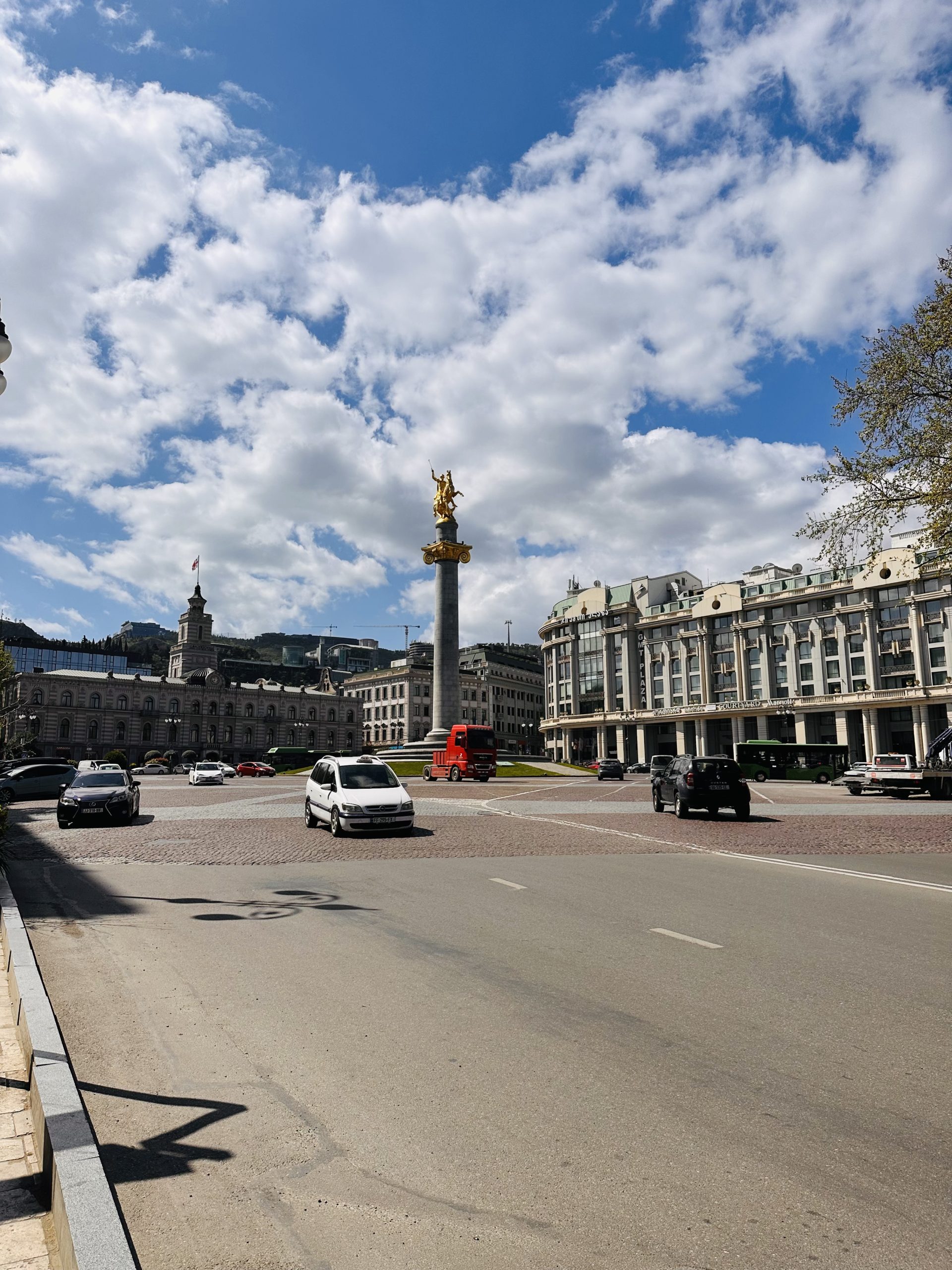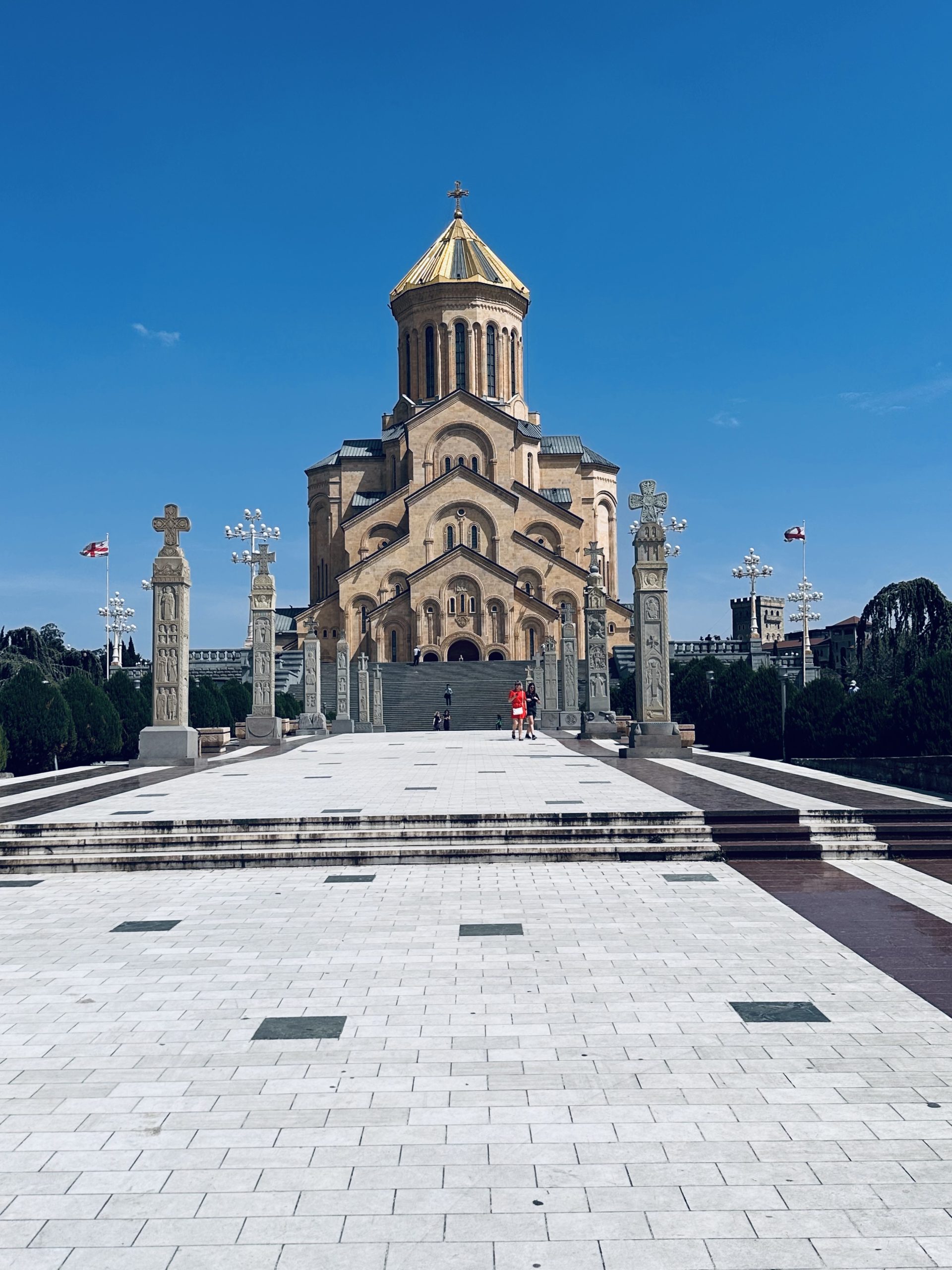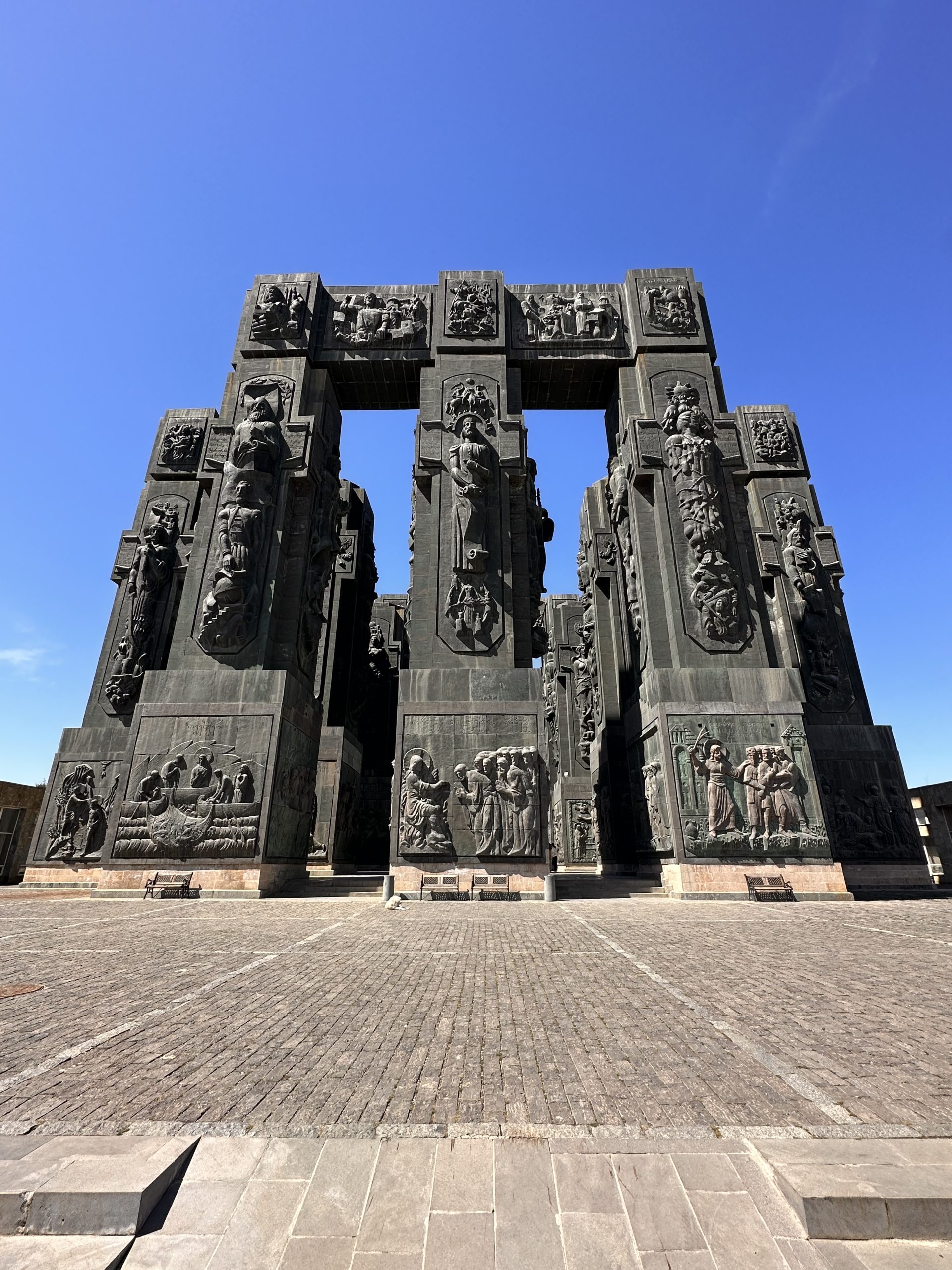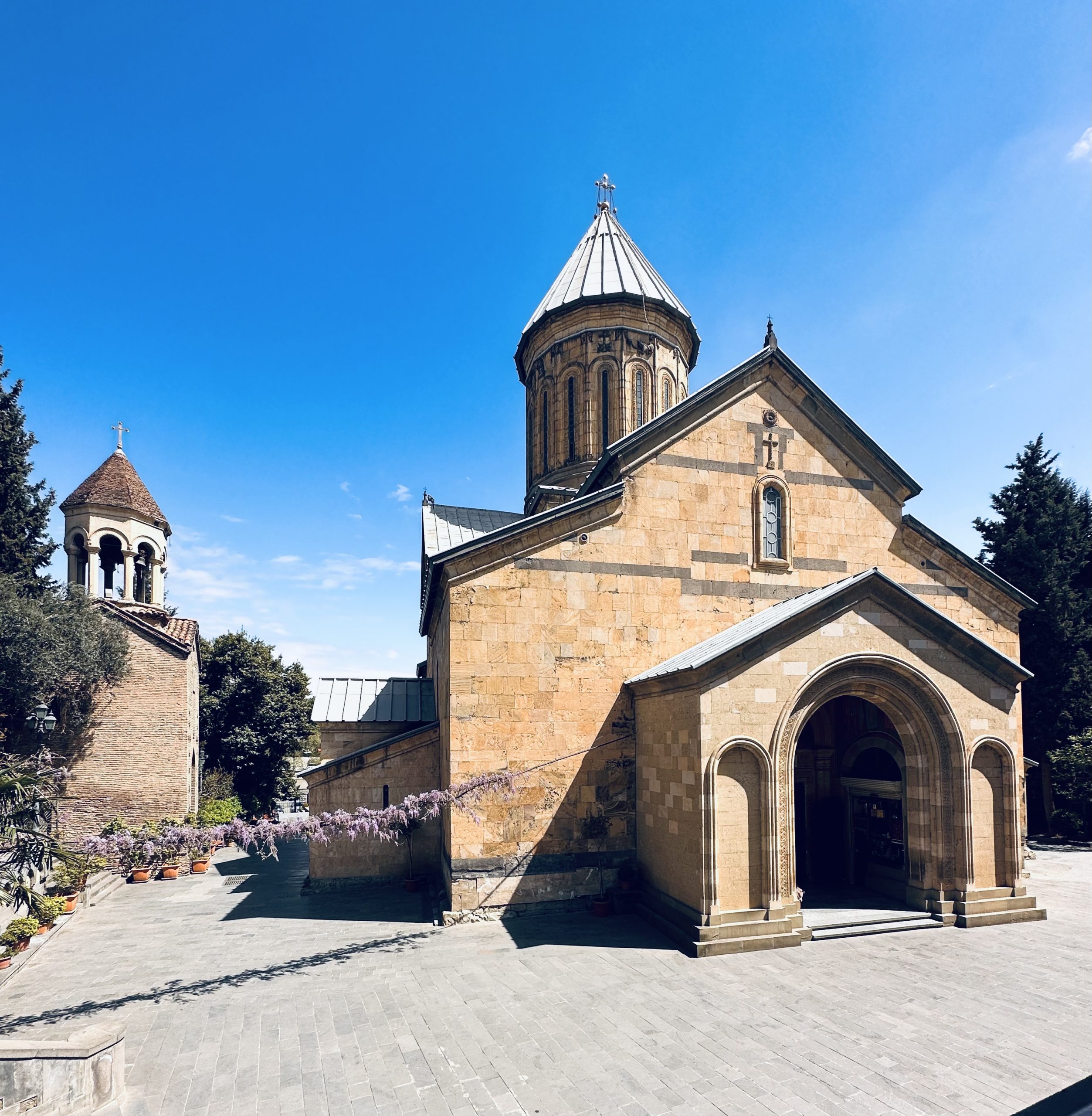Tbilisi, the capital of Georgia, is a city of great charm: a bit of Europe (from a cultural point of view) and a bit of Asia (from a geographical point of view), with its unusual architectural wonders, its troubled history underneath from Soviet rule, to the incredible cuisine and sulfur spas, Tbilisi is a city in which to easily spend at least two days without ever getting bored.

1. Old Tbilisi: Old Tbilisi is a large area that includes Abanotubani, Betlemi Street and the area around the old Meidan Square plus the Avlabari and Chugureti neighborhoods across the river. This tangle of streets is particularly impressive with its ruined houses, spiral staircases, courtyards and large balconies. The historic center of the city represents the oldest part of Tbilisi and, certainly, also the most fascinating: it is here that in the 5th century AD. Vakhtang I of Iberia founded the current Georgian capital and it is here that, today, you will find most of the city’s tourist attractions, as well as numerous bars, cafes, restaurants and shops. Among the many places that have been restored and renovated in recent years.

In Old Tbilisi you will also find the clock tower which deserve a separate chapter and which I will tell you about later. Walking through Old Tbilisi you will have the opportunity to find small hidden churches, art galleries and authentic traditional shops or, why not, you could choose to stop in a modern wine shop to enjoy tasting a glass of Georgian wine or choose a bakery or a pastry shop to taste the delicious traditional local desserts.
PRO TIP: In Georgia, bread (puri) comes in different shapes and sizes. The most traditional are made in a cylindrical terracotta oven (tone) in which the bread is cooked on the red-hot side walls. The Caravanserai Tone bakery is located about 50 meters from the Sioni Cathedral in the historic center of Tbilisi. It is not easy to find it, because there is not a single sign that there is a bakery, only a small door from which a flight of steep stairs leads to a basement. This is one of the oldest bakeries in Tbilisi and one of the best for a tasty stop.
In short, the oldest part of the capital is certainly the place that deserves to be visited carefully and slowly to discover all its facets and most hidden corners and taking part in the free tour was a fantastic way for us to do so.
2 – Rustaveli Avenue:
Rustaveli Avenue is considered the main artery of the capital and owes its name to Shota Rustaveli, the greatest medieval Georgian poet. Here are some of the most important buildings of the city including the Parliament of Georgia, the Opera House, the Kashveti Church, the Georgian Museum of Fine Arts and the Simon Janashia Museum of Georgia.

This street was born in the 1840s on the idea of the viceroy of the Caucasus Mikhail Voroncov who wanted to transform Tbilisi from a Persian city to a modern center close to the great European metropolises: among the first buildings to be built along the avenue was the sumptuous government residence which has now been transformed into the Youth Palace.
The importance of Rustaveli Avenue is not only due to the important buildings, but also to the fact that it was the scene of some dramatic episodes.
On the night of April 9, 1989, some demonstrators who had gathered in front of government buildings were killed by the Soviet military in what is remembered as the Tbilisi Massacre. Subsequently, in 1991, this street was the protagonist of the clashes of the civil war that affected the country and which ended with the deposition of president Zviad Gamsakhurdia. During those days over 100 people died here and numerous buildings were seriously damaged.
3 – Freedom Square:
The starting point of Rustaveli Avenue is Freedom Square, as it is called today since it has changed names over and over again throughout history.
Initially the square was named after Ivan Paskevich, a general of the Imperial Russian Army of Ukrainian origin. Subsequently, in Soviet times, Freedom Square was renamed first Beria Square and then Lenin Square.

The current name of Freedom Square was given to it for the first time in 1918 with the foundation of the First Georgian Republic after the end of the Russian Empire and returned later with the collapse of the USSR.
Today the large square is terribly busy, but you will also find some important works and buildings including the Town Hall and the Freedom Monument which depicts St George slaying the dragon.
4 – Clock Tower:
Wandering around Old Tbilisi you will almost certainly come across a strange and funny work: the Tbilisi Clock Tower. The Tower, in fact, is completely crooked, it seems to defy the force of gravity and gives the impression that it could fall at any moment if it weren’t for that one, single and simple steel girder.

In reality the Clock Tower is not coming down and is a recent building designed in 2010 by the puppeteer Rezo Gabriadze. The so-called “Clock Tower”, in fact, is located right next to the Marionette Theatre, also built and designed by Gabriadze himself. The tower was designed this way to represent the imbalances and unpredictability of life. Despite its eccentric and truly extravagant appearance, it almost seems like a work from a cartoon, the tower has as its underlying theme the inexorable passage of time and the transience of life.
I advise you to stop by here at the stroke of the hour when a window opens in the small balcony above to let out some mechanical puppets, but if you manage to be here at midday or 7pm in the evening you will see a larger “show”, called “The Circle of Life” in which the angel of death rings the bell, signifying the passage of time.
PS: in this tower there is not only one clock, but there is also another which appears to be the smallest clock in the world. See if you can find it (I found it)
5 – Abanotubani Baths
Among the things to do in Tbilisi there is certainly a tour of the Abanotubani district, where the thermal springs are located where you can enjoy a few hours of pure relaxation dedicated to body care. The name of the neighborhood, Abanotubani, literally means “bathing district” in Georgian. This place, in fact, has always been known for its sulphurous baths, the thermal waters of Tbilisi are famous for their beneficial properties especially useful for skin care and digestive disorders.
You will recognise the place because of the many dome-shaped buildings with a Middle Eastern flavour that literally emerge from the ground.
6 – Bridge of Peace
Another of the symbolic places of Tbilisi is the Peace Bridge which was designed by the architect, our compatriot, Michele De Lucchi. The inauguration of the structure dates back to 2010 and since then this pedestrian bridge built in steel and glass connects Rike Park with the Old Town of the Georgian capital.

The most beautiful time to come here is sunset or evening. In fact, thousands of LEDs have been installed on the bridge which, when the sun goes down, make the bridge and its reflections on the water of the Kura river truly spectacular.
Furthermore, from the bridge you can enjoy a beautiful view of the Metekhi church, the statue of King Vakhtang Gorgasali and the Narikala Fortress. At the end you will find a park and from here it is only a few steps to reach the cable car that takes you up to Mother Georgia fortress and Nari Khala.
7 – Take the cable car:
One of the things to do in Tblisi that I really liked is to take the cable car that takes you up to the Mother Georgia fortress and Narikala. Both from the cable car and from the top you have a beautiful view of the city and it doesn’t cost much. Like us you can then walk down and visit the Armenian church of San Giorgio (if like us you stay at the Old Meidan Hotel you will have it in front of you) which is worth entering for the frescoes.

8 – Narikala Fortress
A true symbol of Tbilisi, the Narikala Fortress is undoubtedly one of the places not to be missed during your stay in the city. This ancient defensive building, in fact, dominates the entire Georgian capital from above and offers the most beautiful view of Tbilisi.
Narikala was built in the 4th century, but underwent numerous modifications, renovations and expansions over the centuries. Today it is made up of two distinct walled sections which both appear to be suspended on a steep hill.
9. Holy Trinity Cathedral
Also known as Sameba, the Holy Trinity Cathedral is the third tallest Orthodox church in the world and its golden dome is visible from virtually every part of the city. Its dimensions are truly mammoth. Consider that the interior of the church measures 56 m x 44 m and has a total surface area of 2,380 m2. Its total height, however, from the ground to the cross positioned on the dome is 105.5 m.

10– Chronicles of Georgia
Finally, if during your stay in the Georgian capital you will have enough time for a trip out of town, you should definitely consider the idea of reaching Chronicles of Georgia, a majestic monument located at the gates of the city.

This huge memorial stands near the artificial lake known as “the Tbilisi Sea” and was built by Zurab Tsereteli in 1985, but never actually finished.
Chronicles of Georgia consists of 16 pillars approximately 30/35 meters high on which a series of bas-reliefs have been carved that tell the history of Georgia.
In the upper part of the columns Georgian kings and queens are described, while in the lower part some religious events and the life of Christ are reported.
It is a truly impressive monument due to its size and, given its elevated position, it also offers a magnificent panorama of the Georgian capital.
Once you have finished visiting the Chronicles of Georgia, you could take the opportunity to take a walk on the nearby lake: it is an excellent idea especially during a hot summer day. It is, in fact, one of the most loved destinations even by locals during the summer!
